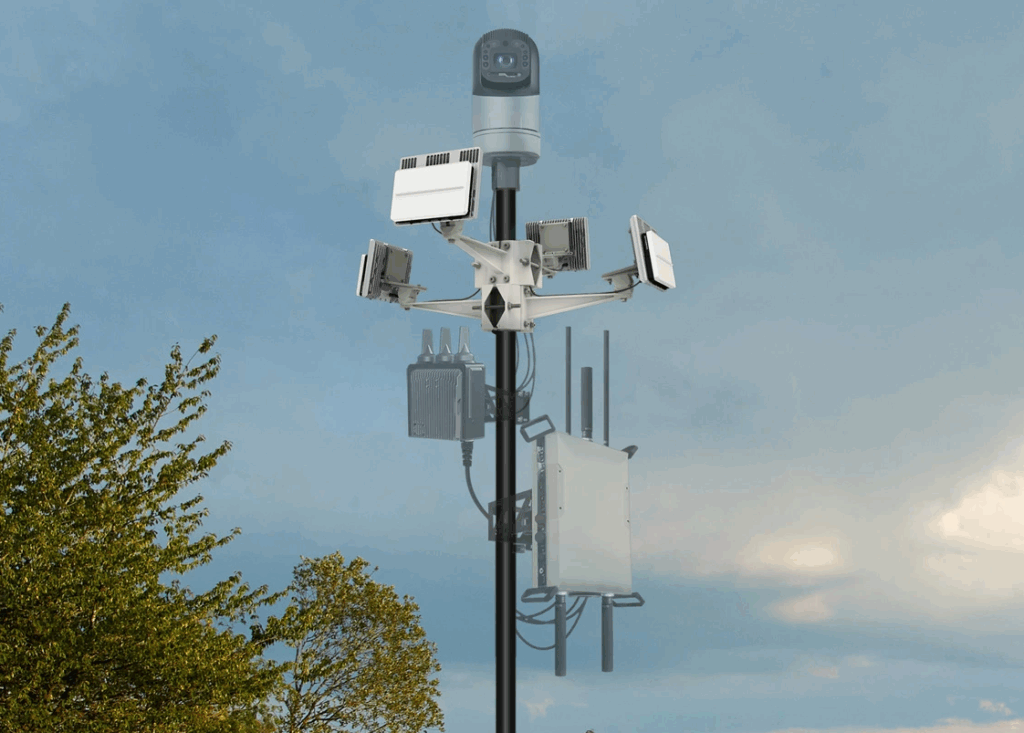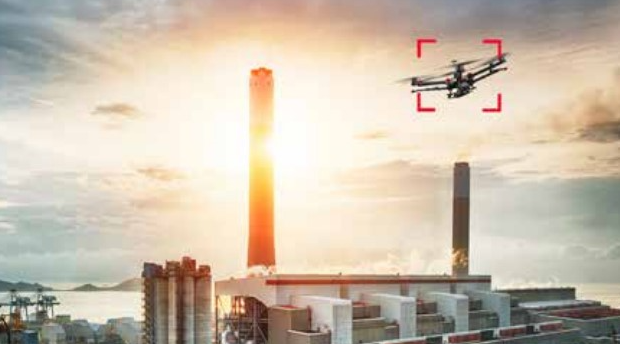By: Dawn Zoldi
Security today requires agility and foresight as autonomous technologies permeate risk and response. I was honored to host the recent Full Crew newscast, where we heard from three experts at the forefront of this topic: Thomas Keary (Titan Protection), Curtis Walters (Echodyne) and Houston Cantwell (Brig. Gen. USAF Ret, Mitchell Institute of Aerospace Studies). The discussion mapped three pressing security topics: privacy in autonomous patrols, legislative efforts to counter drone threats and the urgent need for defense investment in counter-drone technology.
1984 Is Not the Instruction Manual For Autonomous Patrols: How To Balance Privacy and Security
During the first segment of the show, we discussed the article: “Autonomous Drone Patrols Start to Become a Thing” (ACLU, October 2025). This piece explores the growing use of autonomous drones for patrols by both law enforcement and private security and the privacy dilemmas at play. It urges transparency, limitations and oversight to avoid turning surveillance tools into intrusions on civil liberties.
When the public thinks about drones, generally their primary concerns revolve around safety, security and privacy. Keary, who selected the piece, explained how his company (Tiitan Protection) provides drone-as-a-first-responder (DFR) services for private companies, in areas like car lots and manufacturing data centers. “Obviously with more cameras, including drones which are cameras that can fly, privacy is a big concern. And it’s been something we’ve been very mindful of from the beginning,” Keary said. Titan’s privacy-first approach includes, among other things, working with software manufacturers that can set up a “virtual blind” around a client’s property line. “So you can’t even look outside of there,” he noted.

Walters emphasized the operational benefits and privacy protections relating to radar systems. “We’re just looking for objects moving in space…There’s no personally identifiable information (PII), no user data. I can’t tell who’s flying the drone. There’s other sensors that do that,” he emphasized.
I highlighted that some of the best practices for privacy can be drawn from Department of Defense domestic use of uncrewed aircraft systems (UAS) policies, an Obama-era Executive Order for the federal government’s privacy obligations when using drones and a similar NTIA Voluntary Best Practices document. All of these principles in these documents stress the importance of collection, retention and dissemination: what data is gathered, who sees it and how long it’s kept. (See prior AG coverage suggesting public safety adopt similar principles in counter-drone).
The panel agreed that technology must advance with clear communication and robust privacy safeguards. Privacy will always remain foundational to responsible innovation. The segment closed with Keary’s reminder: “I don’t like fearmongering. I don’t believe 1984 was meant to be an instruction manual. I believe the good we can do in conducting security operations with privacy in mind will really make the difference.”
The Authority Gaps: State Leaders Are Urging Congressional Action
The next article, “Governors urge congressional action on drone threats” (The Hill, October 2025), outlines how thirty governors have written to Congress to seek urgent reforms to U.S. law in hopes of empowering state, local, tribal and territorial (SLTT) officials to counter the malicious drones threatening critical infrastructure and public safety. Under current laws, only select federal agencies have authority to neutralize drones. This leaves major gaps in defense capability as UAS threats grow more complex.
Walters captured the crisis best. “Today, only federal authorities, in a small fashion, are able to actually mitigate. That’s the challenge. States are attempting to build their own laws and invest in drone detection technology but they’re hamstrung by federal authority that limits them. They can’t take down an aircraft, and drones are considered aircraft.”
Keary echoed the frustrations of those on the enforcement front lines. He elaborated, “The federal government being the only ones that have the authority to act for counter-UAS, I think is one of the biggest loopholes we have. Are we waiting for the big one to hit? Obviously we’re concerned because if that happens, it might trigger a knee jerk reaction about drones in general. Then all the work we’re putting in and helping our customers gets grounded.”
Even federal authorities, Cantwell confirmed, including those that allow the DoD to protect certain facilities, have their limitations. “Even Department of Defense wise, the installation commanders don’t have the authority they need to defend very important military assets. So there’s plenty, plenty of work that needs to be done there,” he said.
Recent government shutdowns have compounded this problem, as the legal authority for both the Department of Homeland Security (DHS) and the Department of Justice (DoJ). This leaves communities vulnerable as major events like the World Cup and Olympics are approaching, Walters emphasized. He called for “urgent action, legislative action before disaster strikes.”
As authorities lapse and lag, the drone threat and related adversarial tactics continue to evolve. Walters explained, “The threat today isn’t just one drone hovering over a building. It’s a swarm of drones flying a couple hundred miles per hour, autonomously, communicating with each other. So you have to iterate quickly.”
Wrapping up, I stressed the urgency for Congressional action. “This is a drum I’ve been beating for a very long time…if we can’t give [first responders] the authority to protect us, that’s a problem. And there is a right way to do it. There must be a process and procedures to avoid abuse and alleviate concerns.. The technology is there.” (See prior AG coverage of the need for urgent legislative action for counter-UAS)
Show Us The Money: Counter-Drone Investments Needed From Military Bases to Local Infrastructure

The face of war continues to change. Modern threats require committed, strategic rethinking…especially as adversaries leverage swarms, AI, and autonomous platforms. Even though the United States has invested billions of dollars, legacy systems are inadequate systems and remain inadequate to be deployed in large numbers to have a significant impact. A recent article in Inside Unmanned Systems Magazine highlighted a CNAS Counter-Drone Defense Report (October 2025) which outlined these U.S. counter-drone defense investment deficiencies.
Cantwell provided his candid assessment. “Although the character of war is changing, the United States…is not changing as fast as it needs to,” he assessed. “We’ve had to use legacy systems to try to stop these evolving new drone systems.” He continued, “There have been lots of attacks on Army bases and Air Force bases across the Middle East, and the United States has stopped a preponderance of those attacks using these legacy capabilities and systems. But during the Tower 22 attack, which occurred in Jordan last year, three soldiers were killed and about 60 or 70 were injured. So it was a tremendous, and successful attack that occurred.” We need to do better, he said. (See prior AG coverage from the AFA Air, Space & Cyber Symposium about the military counter-UAS dilemma).
The threat persists and translates to the homeland. Keary connected global military threat trends to domestic security. “It’s actually pretty easy to take those TTPs (tactics, techniques and procedures) and bring them into the homeland here. You can go and get a bunch of drones pretty quick and easy, and they don’t have to be big, fancy drones.”
Addressing this threat is more about the funding, then the availability of new technology. Walters added his perspective, in terms of the commercial sector. “I think the technology is there….We can detect these drones at greater ranges…And I think there are safe ways to take that drone down…Funding for the research of this and more, more testing, better education to get better resources for the first responders that are going to be out there is is critical.” Keary agreed, “We need to fund these abilities, beyond the military bases, for our infrastructure.”
The panel concluded with a reality check. Upcoming events like the World Cup and Olympics demand immediate upgrades in authority, capability and, as focused on in this segment of the show, funding.
Security’s Crossroads: Privacy, Power and Preparedness
Autonomous technology brings great promise, and peril, for security. Privacy must be protected, especially as surveillance and response capabilities expand. Legal authorities for federal agents must be expanded to empower state and local defenders, to keep pace with the threat. Above all, investment in counter-UAS innovation is critical, both for the DoD and in the civilian sector, before legacy systems fall irretrievably behind. Effective security means advancing technology, policy and trust together…of course, with the funds to back it.
For further details, visit the official AG episode page.

